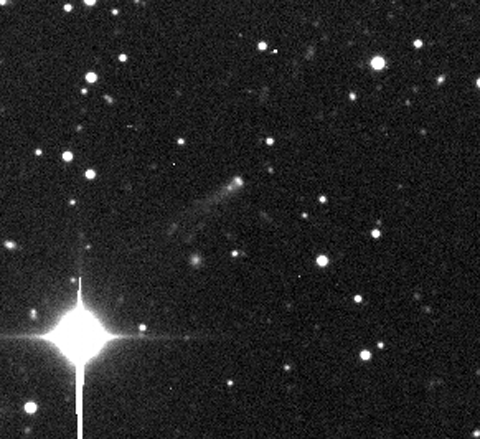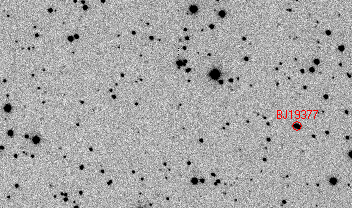
ASTRONOMICAL RESEARCH INSTITUTE
The NEO Follow-Up Project
International Astronomical Search Collaboration

ARI comet confirmation Aug 2006 by P. Miller Hardin-Simmons University.

Confirmation of NEO 2008 EF9 on 2008 03 09
This NEO is traveling at a rate of 2,691 arc/sec. per hour.
Potentially Hazardous Asteroids (PHAs) are currently defined based on parameters that measure the asteroid's potential to make threatening close approaches to the Earth. Specifically, all asteroids with an Earth Minimum Orbit Intersection Distance (MOID) of 0.05 AU or less and an absolute magnitude (H) of 22.0 or less are considered PHAs. In other words, asteroids that can't get any closer to the Earth (i.e. MOID) than 0.05 AU (roughly 7,480,000 km or 4,650,000 mi) or are smaller than about 150 m (500 ft) in diameter (i.e. H = 22.0 with assumed albedo of 13%) are not considered PHAs.
This "potential'' to make close Earth approaches does not mean a PHA will impact the Earth. It only means there is a possibility for such a threat. By monitoring these PHAs and updating their orbits as new observations become available, we can better predict the close-approach statistics and thus their Earth-impact threat.
This project is funded by a NASA grant, NNX13AM42G.